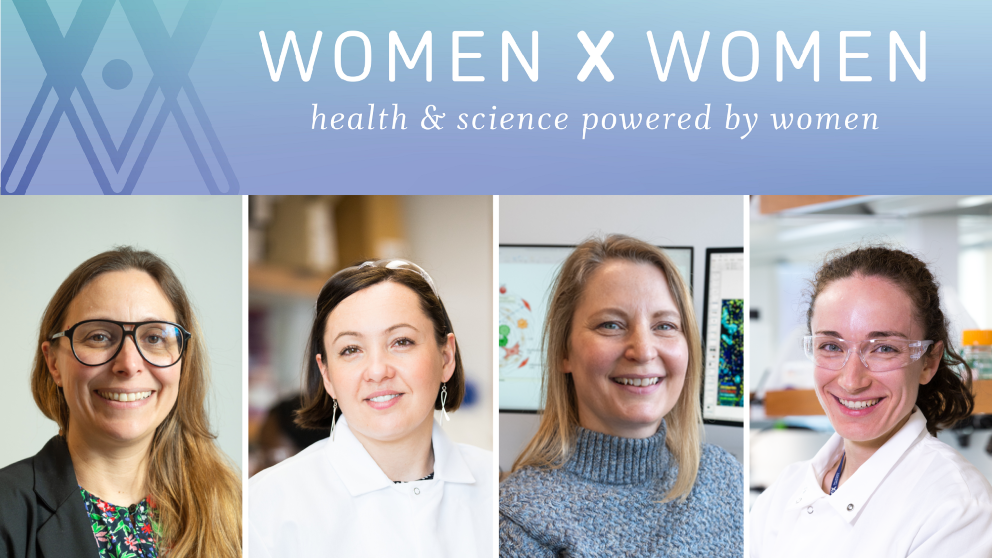 The 2024 Women X Women speakers (l-r) are Elise Courtois, Ewelina Bolcun- Filas, Silke Paust and Beth Dumont.
The 2024 Women X Women speakers (l-r) are Elise Courtois, Ewelina Bolcun- Filas, Silke Paust and Beth Dumont.
Women X Women addresses infertility, endometriosis and other health challenges
Register here to attend virtually or in person.
Four leading Ph.D. scientists at JAX — Elise Courtois, Ewelina Bolcun-Filas, Beth Dumont and Silke Paust — will headline Women X Women 2024, an annual JAX event that highlights research into women’s health and the scientists working to address its unique challenges.
Associate Research Scientist Francesca Menghi, Ph.D., and Vice President and Chief Communications Officer Meghan Finn will serve as moderators for the March 12 event.
This year’s session features remarks by Dr. Manisha Juthani, commissioner of the Connecticut Department of Public Health. Juthani is on leave from Yale School of Medicine, where she serves as a professor of medicine and was instrumental in leading Yale’s response to the COVID-19 pandemic.
We recently sat down with each Women X Women speaker to hear firsthand why their research matters, and why JAX is the best place for them to move it forward.
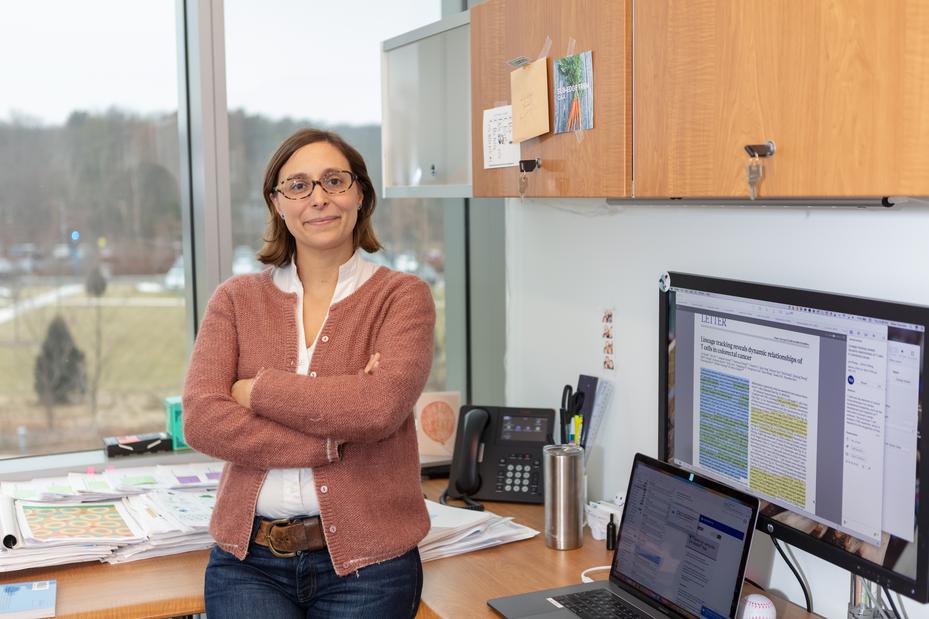 Elise Courtois. Photo credit: Charles Carmada
Elise Courtois. Photo credit: Charles Carmada
Q: Historically, why do we know so little about women’s health issues? What has your research around women’s health revealed?
Courtois: For decades, clinical research primarily focused on men, with results generalized to women. It wasn't until the early 1990s that the importance of including women in research and acknowledging potential sex differences gained recognition. Back then, the National Institutes of Health and the U.S. Food and Drug Administration neglected women’s inclusion into research or clinical trials, driven by paternalistic concerns and logistical challenges such as concerns over potential risks related to future pregnancy and the complexities and unknowns of hormonal variations. This has resulted in gaps in knowledge regarding women’s unique physiological needs and overlooking fundamental aspects of female biology and health care.
This is even more impactful in the case of endometriosis. This condition’s association with menstruation has led to its systemic neglect, with sufferers often mislabeled or dismissed, echoing historical biases toward women’s pain as hysteria. This systemic neglect is further aggravated by the pervasive societal assumption that menstruation is a painful process that must be endured in silence, leading to its stigmatization. For all these reasons (social, economic and cultural factors and lack of research support to establish diagnostics and treatments), endometriosis epidemiology remains extremely challenging.
Bolcun-Filas: To echo Elise, medicine has historically been dominated by men, and women’s health problems were often undiagnosed or overlooked. Clinical trials typically excluded women, and females were underrepresented in preclinical and basic research studies using animal models. There is also persistent belief that female hormones complicate research data, leading many researchers to default to male subjects in their studies.
However, it’s important to recognize that women are not simply men with different reproductive organs. Extrapolating results from male-focused studies doesn't effectively address or treat women-specific health issues. On top of that, research into women’s health has historically suffered from underfunding by government agencies and foundations, creating a significant knowledge gap and slowing progress in diagnosing and treating conditions specific to women.
Moreover, women-specific conditions, especially those related to reproductive health, have received less attention, perpetuating this gap. For example, women cancer survivors face unique challenges related to their reproductive health. Treatments like radiation and chemotherapy can damage ovaries, leading to infertility and early menopause.
Fortunately, growing awareness among oncologists and patients has spurred more research focused on preserving fertility and ovarian function. In our lab, we made a significant discovery: by inactivating a single gene, we could prevent loss of ovarian function and infertility in females treated with radiation and chemotherapy. This breakthrough offers hope for medical interventions that can mitigate premature menopause and infertility, ultimately improving the quality of life for women who have undergone cancer treatments. This research holds promise for better outcomes and underscores the importance of continued efforts to address women’s unique health needs.
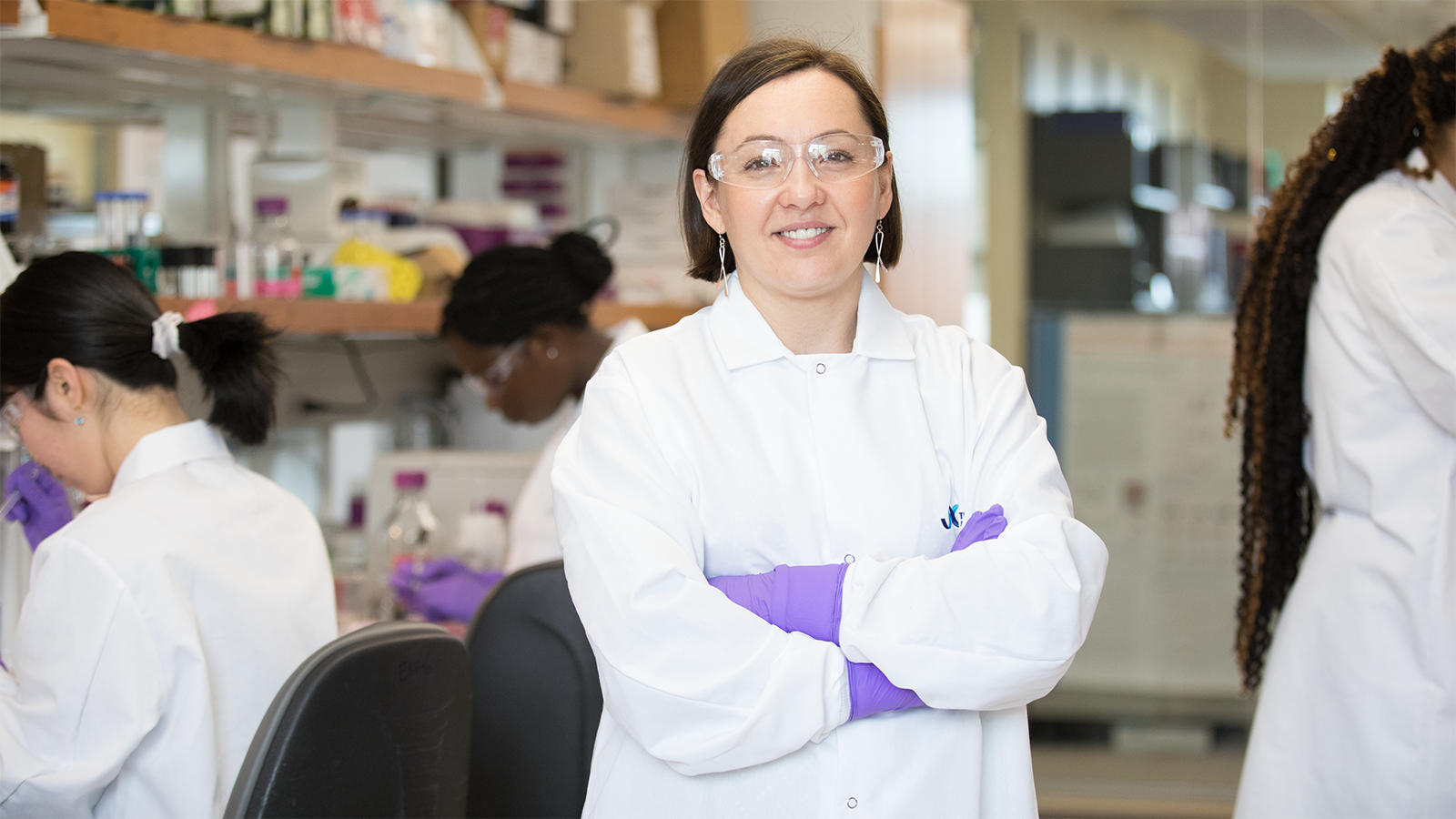 Ewelina Bolcun-Filas. Photo credit: Tiffany Laufer
Ewelina Bolcun-Filas. Photo credit: Tiffany Laufer
Q: How would you describe the current STEM landscape?
Paust: Female representation in Science, Technology, Engineering and Mathematics fields is crucial for fostering diversity, innovation and societal progress. By encouraging and supporting women’s participation in STEM fields, we harness a broader range of perspectives, talents and problem-solving approaches. This diversity leads to more creative solutions to complex challenges and drives innovation forward.
Additionally, promoting gender equality in STEM helps break down stereotypes and barriers, inspiring future generations of girls to pursue their passions and contribute meaningfully to the advancement of science and technology. Ultimately, achieving gender balance in STEM not only benefits individuals and communities but also ensures a more inclusive and equitable society for all.
Dumont: The current genome era is a really exciting time for evolutionary geneticists like me. Every genome sequence is a historical record that chronicles the interplay of mutation, recombination, natural selection, genetic drift and gene flow over evolutionary time. The wealth of genomic sequence data in public repositories combined with advances in supercomputing allow us to probe the action of these elemental evolutionary forces and understand their impact on contemporary patterns of genome variation, including variation associated with disease.
I am under the impression that the overall scientific environment has improved and become more welcoming and inclusive to women. With that said, women scientists still face many challenges. For example, relative to male colleagues at identical career stages, we tend to be disproportionately asked to serve on committees, invited to give talks and asked to participate in various service activities to balance gender ratios. Personally, if I say ‘no’ to these opportunities, I struggle with guilt – as if I’m failing to step up on behalf of an entire community of scientists who need to be heard! As a mother of three young children ages 19 months to 9, I also understand the duality of navigating a professional career while raising kids within a broader societal structure that has failed to catch up to the modern reality of the two-working-parent household.
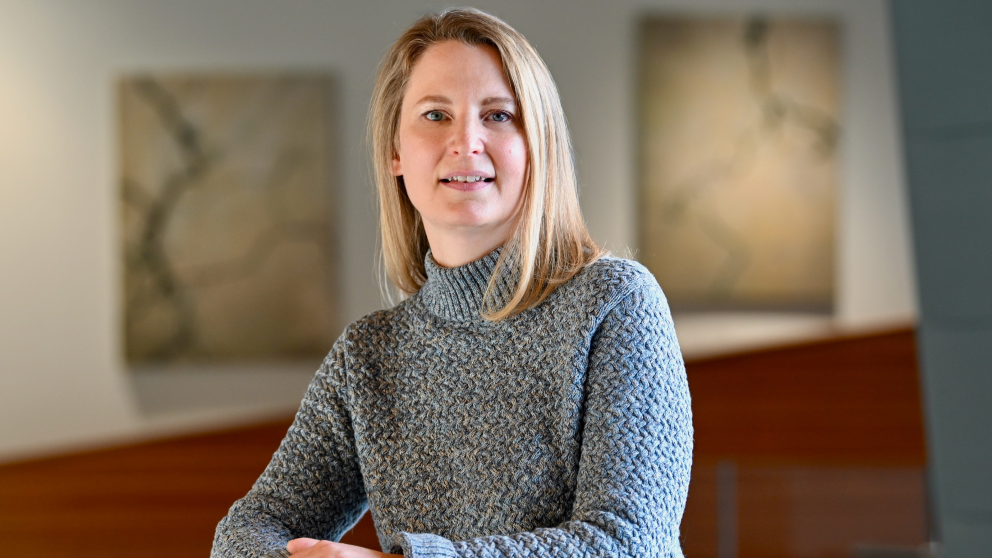 Silke Paust. Photo credit: Cloe Poisson
Silke Paust. Photo credit: Cloe Poisson
Q: What excites you most about your field of study?
Courtois: What excites me most about my field of study is its translational nature, bridging basic and fundamental research with real-world applications. Engaging directly with patients, health care providers and legislators allows for a holistic approach to addressing women’s health issues. This is an effort we are leading with the CT Endometriosis Working Group. Witnessing the tangible impact of our efforts in improving the understanding and research of endometriosis, particularly in cases like the recent acknowledgment and funding for a long-ignored women’s health condition by the state of Connecticut, is incredibly fulfilling. It signifies a significant step forward in advocating for and improving the well-being of women.
Furthermore, the prospect of utilizing novel and cutting-edge technologies such as single-cell and spatial ’omics to serve conditions like endometriosis adds an extra layer of excitement to my field of study. These advancements hold the promise of revolutionizing diagnosis, treatment and ultimately the quality of life for individuals affected by endometriosis.
Bolcun-Filas: I am amazed by the advances made in preserving reproductive health for women facing cancer. For years, our options were limited to in-vitro fertilization (IVF) and egg/embryo cryopreservation, primarily for women of reproductive age. On the other hand, strategies for preserving ovarian hormonal function and fertility in pediatric and adolescent patients were lacking. Recent breakthroughs in cryopreserving ovarian tissue (and even whole ovaries) have been remarkable. Women who received grafts of their cryopreserved ovarian tissue went on to deliver healthy babies. This breakthrough extends fertility preservation options to even the youngest patients. Researchers are continuously pushing boundaries to help women. They work on developing bioprosthetic ovaries and stem cell-derived immature follicles to replenish follicles damaged by cancer treatments.
In my research, I focus on developing pharmacological strategies to protect immature follicles in ovaries during treatment without resorting to surgical interventions. The reality is that many patients may not have the chance to cryopreserve their ovaries or eggs. Some patients need immediate cancer treatment to save their lives, while others lack access or financial means. In such cases, pharmacological interventions may be the only option to preserve long-term ovarian function and reproductive health. We know from our studies in mice that this is possible, and we are excited to translate these findings to help girls and young women who have overcome cancer lead healthy reproductive lives.
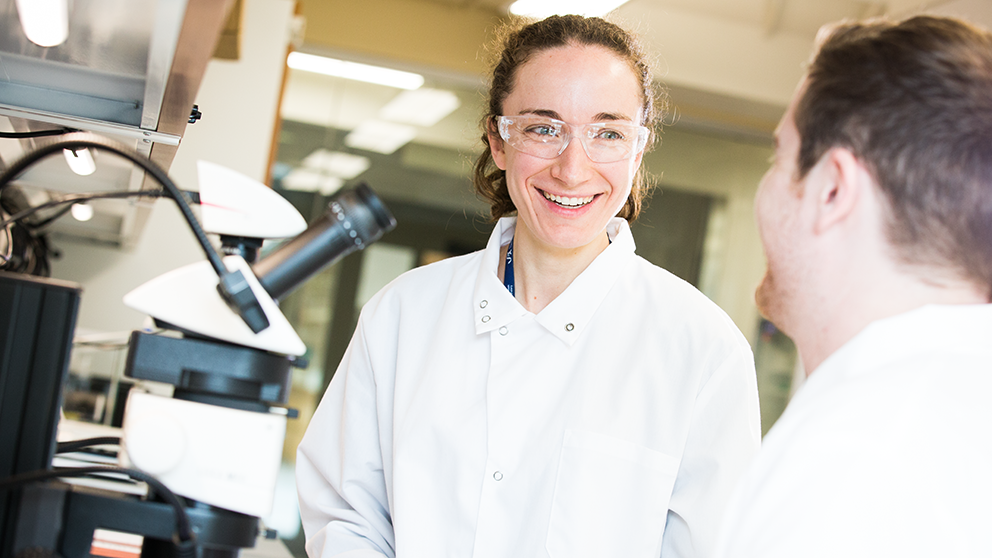 Beth Dumont. Photo credit: Tiffany Laufer
Beth Dumont. Photo credit: Tiffany Laufer
Q: What makes JAX the best place for you to pursue your research?
Dumont: For me, the unrivaled mouse resources! Each of the inbred mouse strains maintained at JAX is essentially a genome evolution experiment unfolding in real time. We can compare the genomes of inbred mice from different time points to document how genomes change on short time scales. Further, we can mine breeding records for different inbred strains as a means of identifying precise genetic factors that contribute to variation in fertility. Much of my active research program is built around these two insights. I would not have access to these needed resources anywhere else.
I also benefit from being immersed in a highly collaborative environment, surrounded by supportive colleagues with diverse areas of expertise. As a native Mainer and outdoor enthusiast, I also appreciate JAX’s prime Bar Harbor location nestled at the boundary of Acadia National Park.
Paust: The Jackson Laboratory for Genomic Medicine (JAX-GM) stands out as an exceptional hub for scientists boasting an array of strengths. As a leader in genomic medicine, JAX-GM offers scientists unparalleled access to cutting-edge technologies and resources, creating an environment ideal for pioneering research. The institution’s firm commitment to scientific excellence is reflected in its vibrant culture of collaboration, where interdisciplinary teamwork and knowledge sharing are not just encouraged but celebrated.
JAX-GM also places a high priority on the professional growth and development of its scientists, offering comprehensive mentorship programs, seminars and workshops tailored to support individuals at every stage of their careers. With its unwavering dedication to advancing genomic medicine and fostering a supportive community that nurtures innovation, JAX-GM is a premier destination for scientists driven to make impactful contributions to the field of biomedical research.